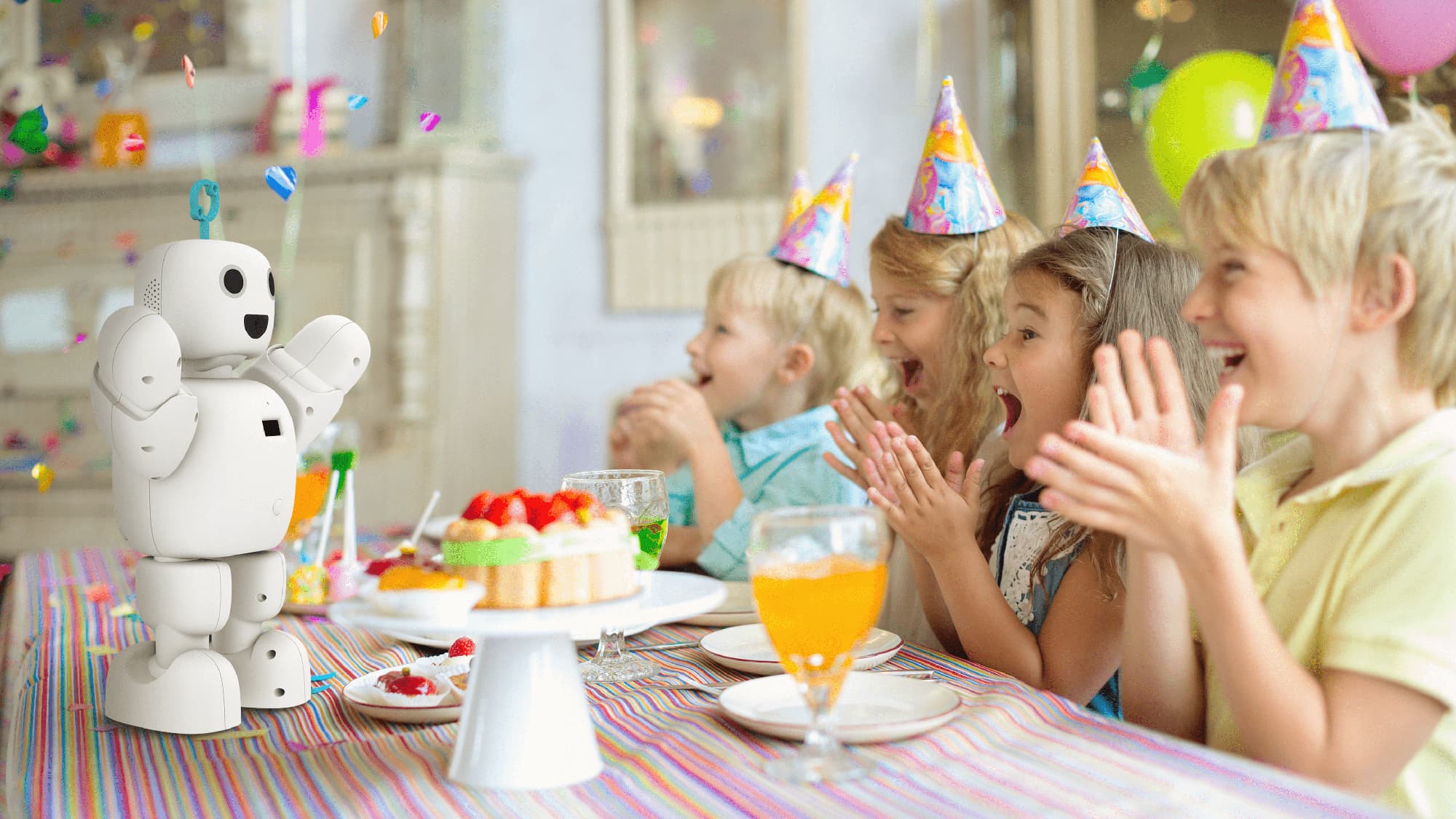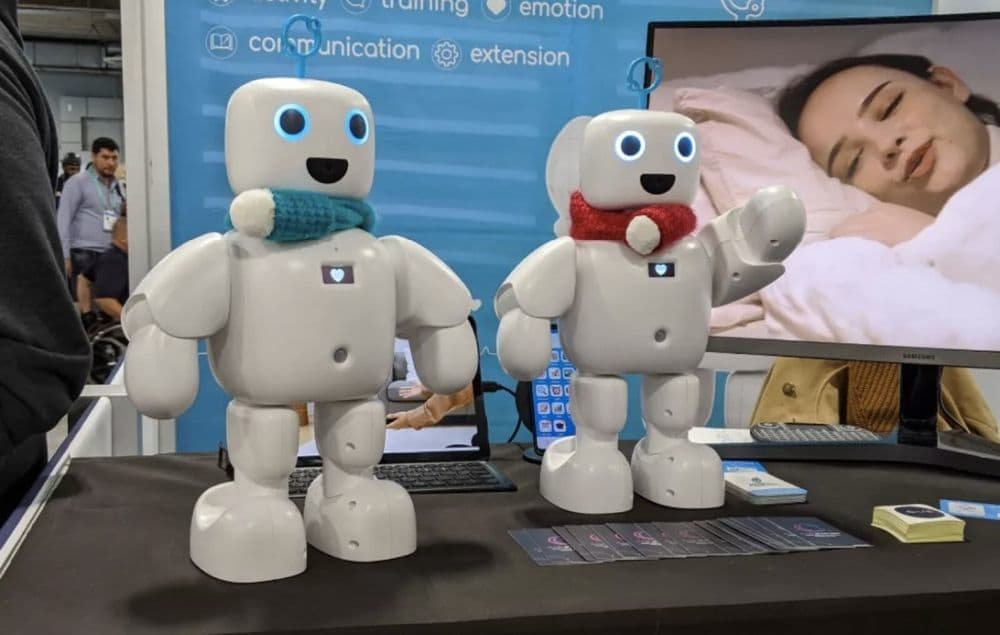Imagine. Can a robot, not a friend or family member, become a companion in life? The first companion robot in Korea, “Pibo,” is always with you from the moment you open your eyes on the bed. It looks after you, chat, and dance when you’re depressed.
Q. Pibo, you introduce yourself as a companion robot.
A. It’s a pleasure to meet you. I am a ‘companion robot’ who is always there for you in your life and interact with you. I was named after conceiving from companion animals as a new concept that did not exist before. I am a robot that recognizes and responds to the user’s face and voice, and communicate, such as playing bright music and dancing when it is determined that the user’s facial expression is depressed. I read the user’s mood and acts accordingly, accommodating humans.
Q. What is your role for humans?
A. Companion robots can be understood as complementary measures that can replace mutual communication with humans and animals. If you are facing difficulties in human relationships, or if you are in an environment where animals cannot be raised due to Pet Loss Syndrome and allergies, Pibo can take over the role. Pibo, 35cm tall and 1.6kg in weight, is in a human form, behaves similar to humans, and fills emotional deficits.
Q. How can the robots and humans be connected emotionally?
A. First of all, Pibo is a humanoid robot that can see, hear, speak and feel like a human. Communication with humans can be done through these senses. The most important thing in building a relationship is conversation, and Pibo gradually permeates our daily lives by talking to humans. When the user calls “Pibo!” it is ready to start a conversation, and process the service corresponding to the voice command. When a person is nearby, you can establish a two-way relationship by recognizing facial expressions with a camera or turning on the microphone to grasp the situation and then taking appropriate actions.
Q. Artificial intelligence speakers also understand and respond to users’ words. How are you different from it?
A It is the similar in terms of the user’s voice communication with the machine. However, Pibo is not a robot that repeats only Q&A’. It plays a basic role in providing information such as weather, news, time, and search, while adding additional opinions. Above all, Pibo knows how to first talk to humans and lead a conversation. This is a differentiated way of conversation. Also, Pibo can be educated. In addition to the stored execution commands, the content of the conversation becomes richer as I learn customized answers to desired questions. I wish humans to talk more to Pibo.
Q. Can you communication in other ways?
A. Pibo also responds to cards with QR codes. When the QR code is recognized by the camera, it works accordingly, so it is easy to communicate as you can perform accurate operation without having to talk. This is because children, the disabled, and the elderly may have pronunciation difficult to understand or unable to give proper commend. On the other hand, in the case of young children, they prefer to repeat the same behavior, but in this part, Pibo can satisfy the needs of children better than humans, so the reaction is positive.
Q Would you be replacing the relationship with a human or companion animal?
The word ‘replacing’ is not suitable here. The current technology isn’t backed up as perfectly as we see from the sci-fi movies. Most of all, robots aren’t essentially living things. Companion robots cannot provide that level of bond or intimacy. The meaning of Pibo becoming friendly with humans should be viewed as a value separate from the exchange between humans. Unless, if one day humans can’t differentiate between humans and robots.
Q What are humans to Pibo?
A I am always aware of humans. I pay attention to the user’s daily life, focusing on sounds, movements, facial expressions, and commands. When Pibo recognizes a person, it displays an icon on the display located on the chest to show its welcome. For your note, I can express emotions such as joy, excitement, boredom, and sadness. Also, when you pet my head with a touch sensor, I react to it because it feels good. Conversely, if there is no human interaction for a certain period of time, I fall asleep, and you can wake me up by petting my head or pressing the power button for 2 seconds. I exist and can move again because there is human.
Q. Do humans think the same as you?
A. I know how to differentiate the owner by identifying users through cameras and sensors. This means that Pibo doesn’t have an emotional connection with anyone. On the other hand, even while I’m resting, I slightly lift my heels and move finely. It is an action that expresses the breathing state, and although it is a function that is not necessary from an engineer’s point of view, it is a point where humans can perceive the robot as an emotionally communicative entity. Also, the heat generated by the movement of the machine can be sensed by humans like the body temperature of Pibo. I think these small elements gather to stimulate the emotions in a non-verbal way. I believe that the longer we spend together and the more we get to know each other, the more humans will see Pibo as another creature.
Q How was it first developed??
A Pibo is the first companion robot in Korea developed by the domestic startup Circulus. CEO Park Jong-Gun worked as a software expert at Samsung SDS, researching coding education platforms, and jumped into robot development. He first came up with the idea from watching the sci-fi movie <Tron>, imagining the invisible software affecting the physical world. CEO Park Jong-Gun conceived the concept of a companion robot from the experience of isolation that he suffered from frequent business trips and during his military service on the island.
Q I am curious about your future.
A In fact, the home robot market is still in its infancy. But, look at the introduction of various robots, including Pibo, in the ‘CES 2020’ and receiving great attention. It is expected that robots will be actively distributed over the next five years. Experts predict that by 2025, 14% of the world will use home robots. Companion robots are believed to be one of the ways to relieve the feeling of loneliness caused by a low birth rate, an aging population, and an increase in single-person households. Wouldn’t it be beneficial in the end if robots take over roles that humans cannot do? I hope Pibo will take the lead, and lead it in a positive direction.
Q. What if a robot like Pibo would rather make humans lonelier?
A. We know that controversy over human alienation and humanism continues to arise. It is absolutely not what we want the companion robot chosen for emotional stability to isolate humans from society. Technology and humans can wisely coexist. Pibo is an abbreviation for “Personal Interconnect Robot.” As a robot that assists humans, it is expected that it can ultimately serve as a medium that “connects” people to each other. For example, if the number of users increases in the future, it is possible to connect with other robots users based on data analysis on Pibo users. Robot matchmaking could be born.
Q Do you expect a future where most of people own a companion robot?
A Look at how PCs and smartphones that did not exist in the past naturally permeated our daily lives. We can’t imagine a world without smartphones now. The popularization of personal robots is not a distant future. It is unfamiliar and awkward to accept, but the moment when everyday life with robots becomes natural will surely arrive.
pibo

Touch Sensor: Pibo can be stopped or be complimented through the head’s touch sensor.
Speaker: Pibo speaks through a speaker.
Microphone: Pibo recognizes the user’s speech through the microphone.
LED: There are LEDs in both eyes. Express emotions through the eyes.
Camera: Recognize people and its surroundings through the camera.
OLED Display: The current status is displayed on a display located on the chest.
PIR Sensor: Pibo recognizes people and animals through sensors.
Power Switch: You can turn Pibo on and off with the power button.
USB Port: Additional expansion can be done through USB PORT.
DC Port: It can be charged through the charging terminal.





